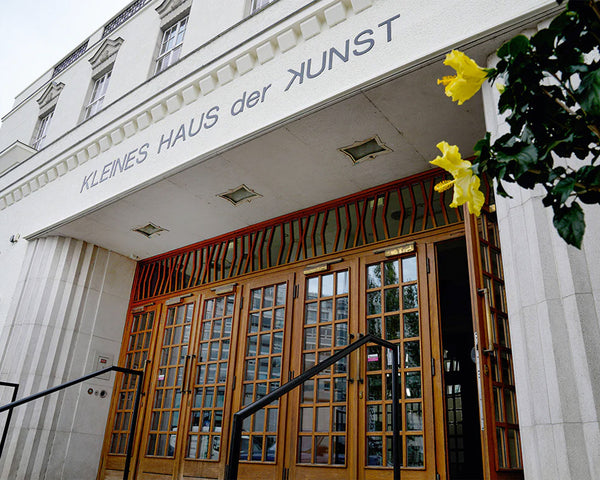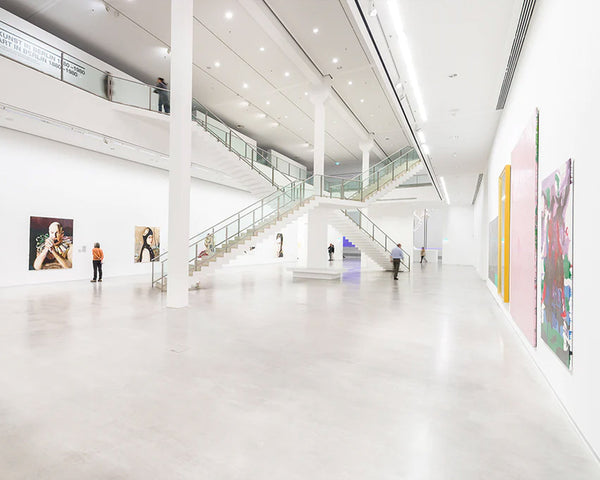Venice
2018 by Tom Kummer
»I love Venice, the same way I love anything shrouded by sadness,
anything that gives off a certain melancholy.«
»I love Venice, the same way I love anything shrouded by sadness, anything that gives off a certain melancholy.«

Canal with gondolas in Venice, Italy. © Adobe Stock
At first it sounded like good news: cruise ships are banned; day visitors have to pay an entrance fee.
It’s a fall morning in 2018. On the last voyage of a luxury megaliner into the heart of the lagoon city. We drift slowly through the Canale della Giudecca from the southeast, the Ionian Sea. I sit on a recliner atop deck 3. The watchword is “indulge yourself.” There are 1.2 crewmembers for every 2 passengers. From sun deck 3 I can comfortably observe the hustle and bustle of St. Mark’s Square. Speedboats and vaporettos whoosh by. The lagoon blues fluctuate between baby blue, ultramarine, and putrefactive. I see foamy waves eating into the city’s ancient piles. I catch a handsome blond boy on sun deck 4 lazily throwing a beach ball to his mother.
I love Venice, the same way I love anything shrouded by sadness, anything that gives off a certain melancholy. I’ve had the same feeling in Israel, in Disneyland, and in Bonn. Like most sad things, the melancholy’s source is complex and difficult to grasp. The existence of Venice is dependent on whether the sea’s ebb and flow strikes it with reduced amplitude and on whether only smaller waves form inside the city – the lagoon will otherwise be transformed into a bay.
I’m well acquainted with the ephemeral. And so I shut my eyes now. In front of the street cafés, a gang of pigeons suddenly flutters away. Near the bank, loaded gondolas dance on the waves. Gray crabs scuttle frantically along a building’s wall, right below the surface of the water. A seagull with a broken wing retreats into a side canal to die.
Sitting on my recliner with closed eyes I can smell death in Venice. I can hear it, feel it. Behind me to the south stretches the forecourt, the in-between world, of the amphibious city. When it floods, small canals course through the salt marshes. When it ebbs, sand islands surface, bereft of vegetation. Oystercatchers rake through the sludge and seaweed with their red beaks. Cormorants sit drying their feathers on metal spheres that rise out of the water like some kind of art installation – the spheres mark where power and telephone cables run along the seabed.
Our megaship is now nosing past the beauty of La Serenissima like a skyscraper-sized wall of windows. The shadows cast by the ship darken the alleyways, turning everything dark and ghostly. Suddenly the orange glow of the streetlamps looks like candlelight. The noise of the water taxis on the Grand Canal fades away. I hear quiet laughter, the muffled sound of clattering plates, scraps of music drifting over crumbling facades. I hear the voices of Truman Capote, Martin Scorsese, and then, incomprehensibly, the voice of Leni Riefenstahl! She won the coveted Coppa Mussolini at the 1938 film festival with her movie Olympia.
I’m four years old the first time I come to Venice. Right there it must have happened – I reserve a permanent place in my head for the fantastic. My parents bring me along to the world’s oldest film festival. Why? They came because of Michelangelo Antonioni’s Red Desert (1964), the eventual winner of the Golden Lion.
During screenings I stroll around St. Mark’s Square with a babysitter. Venice feels like I’m being allowed to gobble an entire box of chocolates in one gulp. I can’t remember anything beyond that. Years later my father tells me Antonioni’s film is about a “crisis of meaning.” I’m sixteen and I only understand this: after sundering all emotional and social ties, all that remains is the sensual surface of things. In Red Desert, Antonioni describes alienation with a surreal cinematography of light and color that emphasizes what’s demonic and fascinating about the world of perception. That is to say, my father claims, the film is about how coping with this dichotomy is a prerequisite for survival.
Today, I know that my own future depends on my ability to cope, and tied to this is the death of Venice. Magnificent things were created here – hated and killed, betrayed and deceived, fought over and enslaved. I can even perceive this mythos from here on my recliner atop sun deck 3. What else could this steady wailing sound coming from behind the basilica mean? Is it the Doge Marino Faliero, who’s been searching for his head ever since being decapitated in 1355? Or those sculptures there on the walls of the Palazzo Mastelli, aren’t they merchants who were transformed into stone as punishment for their deceptions?
When I return to Venice in 1981, the dichotomy between the demonic and fascinating is even more obvious. Following Riefenstahl is another German victor, Margarethe von Trotta, with her film Marianne and Juliane. Now I’m nineteen. Joy Division gives a concert, without Ian Curtis, in the sinking city. Decay is a turn on, fuck the climate, it’s going to happen here: the Downfall.
Lost in such memories, I’m enveloped now by an almost religious melancholy. I’m caught up in the magic of Venice. In front of me on deck 3, Peggy Guggenheim is sitting on a recliner, smiling at me. She’s so crazy about Venice that she has just moved her home and collection from Manhattan to the Palazzo Venier. I’m lying in the in-between world. Eyes closed, all that interests is the Fata Morgana of a city always reemerging from the mist. The world is indefinable. Empty Venice opens itself for projections. The symbolist Odilon Redon painted fantasy works here, like his skiffs with yellow flags on an infinite sea. In the 1840s, J. M. W. Turner had the city lit up and disappear. The massive church of Santa Maria della Salute glimmers now as a white silhouette, visible through the white and honey-yellow mist. The haze keeps the world seductively close and untouchably far. It makes me think of my beloved Pipilotti Rist at the Biennale in 2005. In her video fresco Homo sapiens sapiens, two naked women were projected into a paradisiacal world on the ceiling of the church San Stae – until facing pressure from outraged Catholics and had to be closed.
Now I feel the oblivion of passing time, a piece of eternity. Is this not what Capote was expecting when he told me how he wanted to lose himself in the penetrating noise of the vaporetto, in the reflection of the old facades, and the stirring of the stinking water? With eyes wide open, I stare into the sky over the lagoon. Scattered clouds approach each other like pieces of a puzzle. When I awaken, the puzzle will undoubtedly be finished. Undoubtedly. And then the sky over Venice will bear the color of old silver coins.



